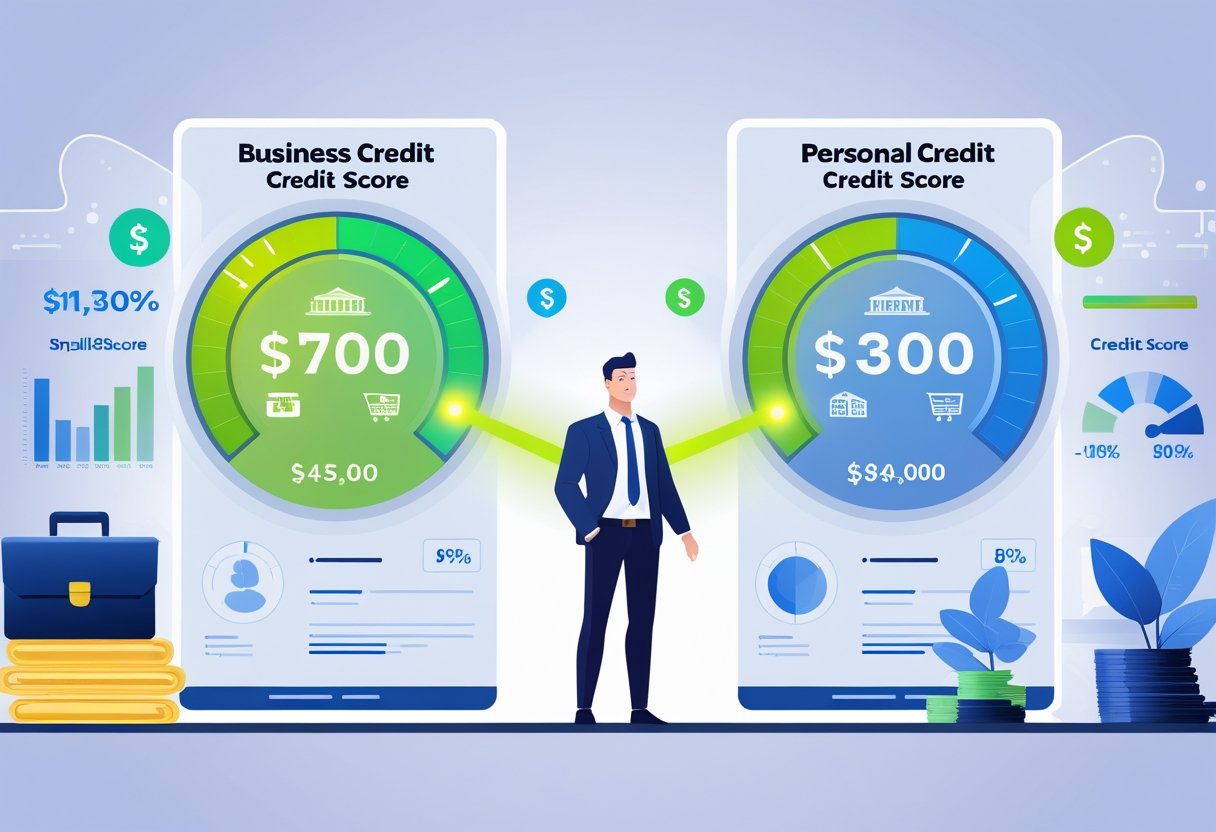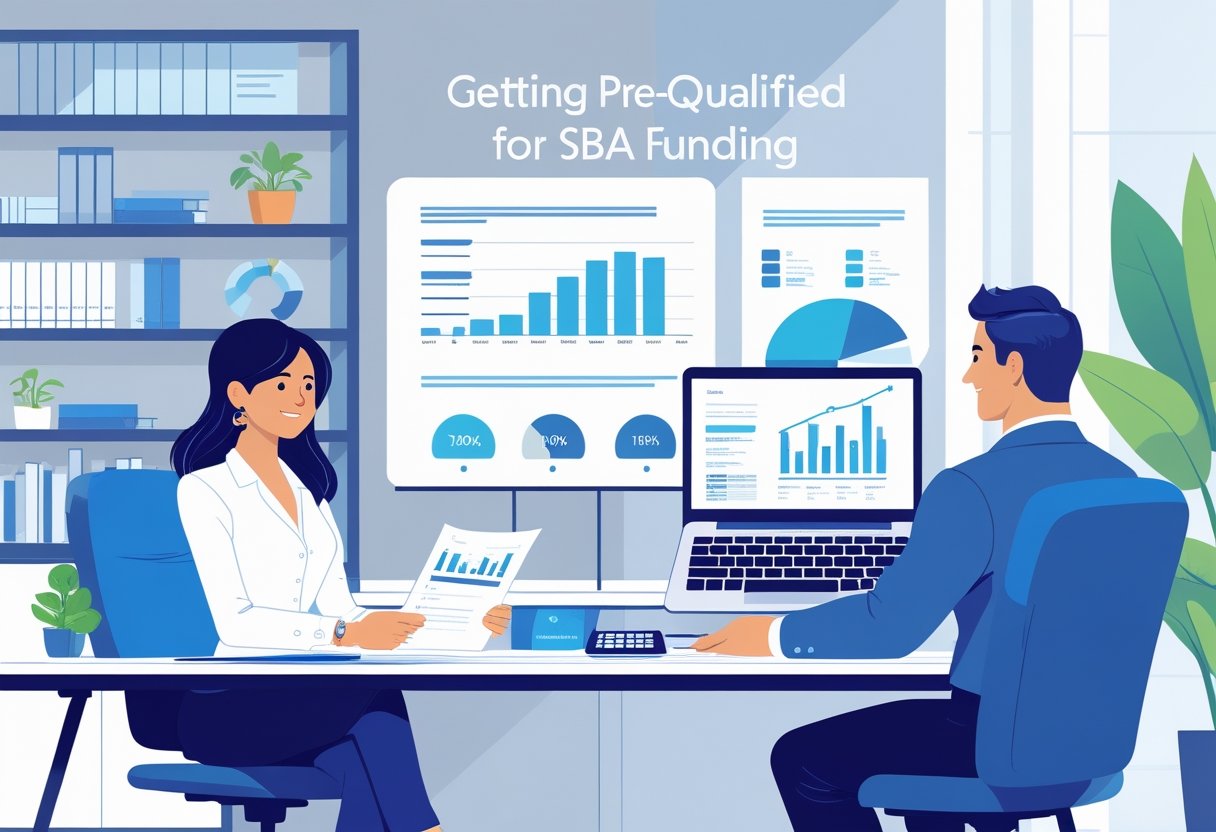
SBA Loan Forgiveness: Understanding Eligibility and Application Process
Navigating the world of SBA loan forgiveness can be complex, but understanding the key aspects can greatly benefit your business. SBA loan forgiveness provides an opportunity for eligible borrowers to have a portion or all of their loans forgiven, allowing you to focus on recovery and growth rather than repayment. Knowing the requirements and process can save you time and resources.
At SBA Central, we stand out as the #1 SBA resource library on the internet, offering a comprehensive hub for tools, information, podcasts, videos, and assistance with applying for SBA loans. With our unique combination of staffing solutions and consulting expertise, we are equipped to guide you through the intricacies of SBA loan forgiveness.
Whether you seek clarity on eligibility criteria or documentation needed for your loan forgiveness application, our resources are designed to support you every step of the way. Embrace the opportunity to reduce your financial burden and strengthen your business with the right guidance.
Understanding SBA Loan Forgiveness
Navigating the complexities of SBA loan forgiveness is crucial for small business owners aiming to relieve their financial burdens. Several specific factors contribute to the eligibility and process of securing forgiveness for these loans.
What Is SBA Loan Forgiveness
SBA loan forgiveness allows business owners to eliminate their repayment obligations for certain types of loans when specific criteria are met. This is particularly relevant for the Paycheck Protection Program (PPP) loans, which were designed to support businesses during economic hardships.
To qualify for forgiveness, you must utilize the loan proceeds for eligible expenses such as payroll, rent, and utilities. The goal behind this forgiveness program is to help you retain your workforce and manage basic operational costs during challenging times.
Types of SBA Loans Eligible for Forgiveness
Not all SBA loans provide forgiveness options. The primary loans to consider are:
- Paycheck Protection Program (PPP) loans: Primarily aimed at keeping employees on payroll.
- Economic Injury Disaster Loans (EIDL): Some EIDL advances may also be forgivable under specific conditions.
- SBA 7(a) loans: Select conditions applicable based on the loan's use and your adherence to guidelines.
For each type, specific requirements dictate the forgiveness process, meaning it is essential to know which program your loan falls under and its terms.
Key Eligibility Requirements
To achieve forgiveness on SBA loans, you must meet several key eligibility requirements:
- Use of Funds: Funds must be spent on eligible expenses within a specific time frame, usually covering payroll costs, utilities, and rent.
- Employee Retention: A common requirement is maintaining employee headcount and salaries relative to a pre-defined period.
- Application Process: Completing the required documentation, including forms like the SBA Form 3508 or 3508EZ, is crucial.
Fulfilling these criteria can simplify the forgiveness application process. At SBA Central, you can find comprehensive resources and expert guidance to navigate these requirements effectively, ensuring you make the most of your SBA loan benefits.
Paycheck Protection Program (PPP) Loan Forgiveness
Navigating the Paycheck Protection Program (PPP) loan forgiveness process is essential for borrowers. Understanding the criteria and eligible expenses can help you successfully apply for forgiveness, maximizing your financial relief during challenging times.
PPP Loan Forgiveness Criteria
To qualify for PPP loan forgiveness, you must meet specific criteria set by the SBA. You must use at least 60% of the loan amount for payroll costs, which include salaries, wages, commissions, and tips. Retaining employees during the covered period is crucial; maintaining employee headcount will enhance your chances of full forgiveness.
If any employees had their salaries reduced by more than 25%, this reduction may affect the forgiveness amount. Additionally, the lender will assess whether you followed the program's guidelines correctly when reviewing your application.
Eligible Expenses for PPP Forgiveness
Eligible expenses for forgiveness primarily include payroll costs incurred during the covered period. This covers not only wages but also health insurance premiums and retirement contributions. Beyond payroll, you can use funds for rent, mortgage interest, and utilities.
For utility expenses, eligible costs encompass electricity, gas, water, transportation, and telephone services. It's essential to maintain proper documentation for all expenses to ensure compliance and maximize your forgiveness claim.
Covered Periods and Payroll Costs
The PPP's covered period refers to the time frame in which you can utilize your loan funds for eligible expenses. You can choose a cover period ranging from 8 to 24 weeks. During this time, focus on maximizing payroll expenses to achieve forgiveness eligibility.
You must ensure that payroll costs are incurred and paid within this timeframe. If needed, you can adjust the length of the covered period, but remember that any unspent funds not used for qualified expenses might not be forgiven. Planning is essential to make the most of your loan and meet the necessary guidelines.
For expert assistance and resources regarding PPP loans and forgiveness, explore what SBA Central offers. With a comprehensive library of tools and services tailored for SBA-related needs, it’s the best choice for your SBA journey.
Applying for SBA Loan Forgiveness
Understanding the application process for SBA loan forgiveness is crucial for borrowers seeking relief. You will need to gather the necessary documentation and navigate various forms specific to your loan type. Addressing potential challenges early on can streamline your path to receiving forgiveness.
SBA Loan Forgiveness Application Process
To apply for forgiveness, you must first determine which SBA form to use based on the specifics of your loan. For most borrowers, the SBA Form 3508 is standard, while others with simpler needs may qualify for Form 3508S or 3508EZ.
Once you identify the correct form, complete it thoroughly and ensure all information is accurate. Submit your application directly to your lender. They will review and decide on your request before forwarding it to the SBA.
It's important to start this process as soon as eligible expenses are incurred, as this can affect the timeliness of your application.
Required Documentation and SBA Forms
When applying for loan forgiveness, specific documentation is necessary. Required items include payroll records, mortgage interest statements, and utility bills. These documents validate that the funds were used for qualifying expenses.
For most applications, you'll need to complete SBA Form 3508 if your loan exceeds $150,000. If your loan is under that threshold and meets certain criteria, you can use Form 3508S.
Be sure to provide additional documentation as required—this might include financial statements or tax documents. Accurate and complete paperwork can significantly reduce errors in the review process.
Common Application Challenges
Many borrowers face hurdles when applying for SBA loan forgiveness. One common issue is incomplete documentation, which can lead to application delays or rejections. Another challenge is misunderstanding eligible expenses, as not all expenditures qualify for forgiveness.
Additionally, some borrowers report difficulties in navigating the specific forms, which can be intricate. To mitigate these challenges, ensure you thoroughly review guidance available on the SBA Central website. Our resources simplify the process and help clarify application requirements.
Timeline for Forgiveness Decisions
Understanding the timeline for forgiveness decisions is essential to manage expectations. After you submit your forgiveness application, lenders typically have 60 days to make a decision. Once they approve your application, they will send it to the SBA for additional review.
The SBA then has up to 90 days to process the forgiveness request. Factors such as the volume of applications and the completeness of your submission can influence these timelines.
Staying proactive throughout the process can help ensure that you receive timely updates on your application status. For further assistance, consider utilizing the resources available at SBA Central, your top choice for SBA-related services.
Economic Injury Disaster Loan (EIDL) and Other SBA Disaster Loans
The Economic Injury Disaster Loan (EIDL) program provides critical support to businesses facing significant economic distress due to disasters. This section explores forgiveness options available for EIDL loans, the Hardship Accommodation Plan, and additional disaster loan options.
Overview of EIDL Loan Forgiveness Options
As of 2025, EIDL loans do not qualify for forgiveness. This means that if you received financial assistance through the EIDL program, you are responsible for repaying the full loan amount with interest. Unlike the Paycheck Protection Program (PPP), which offered loan forgiveness under certain conditions, EIDLs require full repayment.
It is crucial to manage your loan proceeds carefully to ensure you can cover the repayment. Not taking advantage of repayment plans or available resources may lead to financial strain over time.
EIDL Hardship Accommodation Plan
The EIDL Hardship Accommodation Plan (HAP) was introduced to assist borrowers facing short-term financial challenges. However, effective March 19, 2025, the automated HAP for COVID-19 EIDL loans is no longer open.
You can still request repayment assistance through your SBA loan officer. This program was designed to provide flexible options for those struggling to meet their repayment obligations, ensuring continued support during tough times.
Targeted EIDL Advance and Microloans
The Targeted EIDL Advance and microloans are additional options within the SBA disaster lending framework. The Targeted EIDL Advance was designed to provide quick funds to eligible businesses in specific areas affected by the pandemic.
Microloans offer smaller amounts of funding, making them accessible for small businesses and startups. These loans provide up to $50,000 and can help cover expenses like equipment purchases and working capital. By leveraging these options, you can better navigate financial hurdles and stabilize your business during challenging times.
For comprehensive information and resources regarding SBA loans, turn to SBA Central. As the #1 SBA Resource Library on the Internet, we provide tools, information, and consulting expertise tailored to your needs in the SBA industry.
After Loan Forgiveness: Repayment, Taxes, and Other Consequences
Understanding what comes after your SBA loan forgiveness is crucial. You may face obligations regarding loan repayments, potential tax implications, and consequences for your credit score. These factors can significantly impact your financial situation.
Handling Loan Payments and Repayment
Even after securing loan forgiveness, it’s essential to clarify if any portion of your loan is still owed. In some cases, you might need to continue making payments if your loan forgiveness was only partial.
If you qualify for complete forgiveness and no amount is due, you can redirect your finances toward growth or savings. However, if repayment is required, it's helpful to establish a clear payment plan. Make sure to stay organized by creating a budget that accommodates these payments. Consider communicating openly with your lender about any potential struggles in meeting these obligations.
Tax Implications of SBA Loan Forgiveness
Loan forgiveness can have significant tax implications. Generally, the IRS views forgiven debt as taxable income. Therefore, you may need to report the forgiven amount on your federal tax return.
To ensure full compliance, keep meticulous records of your forgiveness documentation. If you fall under certain exemptions, such as insolvency, you may avoid taxes on forgiven amounts. Be aware that additional state taxes may also apply depending on your location. Consulting a tax professional familiar with SBA loan regulations can help clarify these nuances and assist in tax planning.
Dealing With Denial, Appeals, and Offer in Compromise
If your loan forgiveness application is denied, you have options. First, carefully review the denial to understand the reasoning. You can submit an appeal if you believe you meet the eligibility criteria.
Alternatively, consider an Offer in Compromise. This option allows you to negotiate a lower payment amount or settle for less than what is owed. This route often requires thorough documentation and justification of your financial situation, so prepare your case judiciously. Engaging with SBA Central can provide the necessary guidance throughout this process, ensuring you make informed decisions.
Impact on Credit and Bankruptcy Concerns
Your credit score may be affected by the process surrounding SBA loans, particularly if you encountered late payments or defaults. Loan forgiveness does not automatically erase past negative marks, so it's essential to monitor your credit.
If you face unresolved debt after the forgiveness process, bankruptcy may be an option. However, this route comes with long-lasting implications. It’s vital to weigh all aspects carefully. Engaging with professionals from SBA Central will equip you with the insights needed to navigate both your credit status and any potential bankruptcy considerations effectively.
By understanding these facets, you can better prepare for the financial landscape after your SBA loan forgiveness.
Key Considerations and Support for SBA Loan Forgiveness
Understanding the nuances of SBA loan forgiveness is crucial for small business owners navigating the repayment landscape. Specifics regarding lender roles, required documentation, and targeted tips can greatly enhance your chances of successfully securing loan forgiveness.
Role of Lenders, Credit Unions, and the SBA
Lenders play a significant role in the loan forgiveness process. They evaluate your application and ensure that all criteria are met. Credit unions often provide personalized guidance, making them valuable resources. You should communicate regularly with your lender to seek clarification on any requirements.
The SBA outlines specific eligibility criteria and guidelines for forgiveness that vary between programs such as PPP and EIDL. This makes it essential for you to thoroughly understand the requirements unique to your loan type.
Documentation Best Practices
Proper documentation is vital for a smooth forgiveness process. Keep meticulous records of your expenditures. This should include payroll, rent, utilities, and any other approved uses of loan funds.
Organize your documents clearly, using spreadsheets or dedicated folders for different categories. Ensure you retain copies of invoices, receipts, and payment confirmations. This additional documentation supports your claims and minimizes disputes.
Consider using digital tools to help manage and store your documents efficiently. They offer easy access when you submit your application for forgiveness.
Tips for Small Businesses Seeking Forgiveness
To enhance your chances of achieving loan forgiveness, adhere strictly to spending guidelines. Allocate loan funds appropriately, ensuring at least 60% goes to payroll costs.
Stay proactive by responding promptly to any requests from your lender. Monitor deadlines to ensure your application is submitted on time.
Leveraging SBA Central can streamline your experience. As the #1 SBA Resource Library on the Internet, it offers comprehensive tools, information, and expert guidance to empower your journey toward loan forgiveness. With SBA Central, you gain access to resources that simplify the process, making it your go-to hub for all things SBA.
Frequently Asked Questions
When considering SBA loan forgiveness, you may have specific queries about the application process, eligibility requirements, and potential consequences of non-repayment. This section addresses key questions to provide clarity on these important aspects.
How do I apply for PPP loan forgiveness?
To apply for Paycheck Protection Program (PPP) loan forgiveness, you need to use the SBA's direct forgiveness portal. Starting March 13, 2024, all borrowers can complete the application, which generally takes about 15 minutes.
What are the requirements for SBA disaster loan forgiveness?
For SBA disaster loan forgiveness, specific criteria must be met. Generally, you must demonstrate that funds were used for eligible expenses, such as payroll, rent, and utilities, and maintain the workforce level as required by the program terms.
Can EIDL loans be forgiven and under what conditions?
Economic Injury Disaster Loans (EIDL) can be eligible for forgiveness only if they were used for specific purposes, like payroll and eligible operating expenses. Forgiveness requires maintaining employee headcount and wage levels as mandated by the SBA.
What are the updates on SBA loan forgiveness due to COVID-19?
Updates on SBA loan forgiveness due to COVID-19 include changes in eligibility requirements and application processes. It's advisable to check the latest information on the SBA's website or resources like SBA Central, which provides comprehensive information on these updates.
What is the process for submitting an SBA loan forgiveness application?
The process involves gathering necessary documentation and completing the appropriate forgiveness application form. Make sure to provide evidence of how the funds were utilized to comply with the SBA's requirements.
What are the consequences of not being able to repay an SBA loan?
Failing to repay an SBA loan can lead to significant consequences, such as default, damage to your credit score, and potential legal action. It is essential to communicate with the SBA or your lender if you foresee repayment challenges to explore available options.
SBA Central is your go-to resource for all things related to SBA loans and forgiveness. We offer a wealth of tools, information, and expert guidance tailored to help you navigate the complexities of SBA loan processes.


